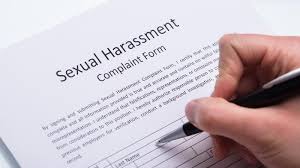Federally, the Canada Labour Code provides the following definition of sexual harassment:
“any conduct, comment, gesture or contact of a sexual nature,
(a) that is likely to cause offence or humiliation to any employee; or
(b) that might, on reasonable grounds, be perceived by that employee as placing a condition of a sexual nature on employment or on any opportunity for training or promotion.”
The following definition of harassment, taken from the Ontario Human Rights Code, is representative of how harassment is defined under Canadian law as:
“engaging in a course of vexatious comment or conduct that is known or ought reasonably to be known to be unwelcome.”
Effective September 8, 2016, Ontario’s Sexual Violence and Harassment Action Plan Act (Bill 132) amends the Occupational Health and Safety Act (“OHSA”) to expand the meaning of workplace harassment to include workplace sexual harassment. Bill 132 also imposes additional obligations on employers concerning their workplace harassment policies, programs and investigations.
In simpler terms, sexual harassment can include (but is not confined to):
As the Ontario Human Rights Commission’s Policy on Preventing Sexual and Gender-Based Harassment points out:
The reference to comment or conduct “that is known or ought reasonably to be known to be unwelcome” establishes a subjective and objective test for harassment. The subjective part is the harasser’s own knowledge of how his or her behaviour is being received. The objective component considers, from the point of view of a “reasonable” third-party, how such behaviour would generally be received. Determining the point of view of a “reasonable” third-party must take into account the perspective of the person who is harassed.
Harassment, sexual or otherwise, is any unwanted conduct, whether verbal or physical, that humiliates or offends. Harassment can interfere with the ability to do your work, and thus can result in serious consequences in the workplace.
Sexual harassment, in particular, has been defined as:
“unwelcome verbal or physical advances or suggestions of a sexual nature, any sexually explicit derogatory statement, any pattern of sexually discriminatory remarks made by someone in the workplace that is offensive or objectionable to the recipient, causes the recipient discomfort, creates a hostile atmosphere, or interferes with the recipient’s job performance.”
Let’s look more closely at how the line is crossed by examining welcome vs unwelcome conduct.
The law is not meant to forbid the enjoyment of another’s company. Behaviour or conduct that is considered welcome (acceptable or appropriate by the recipient) is not considered sexual harassment. For example:
When offensive conduct becomes a condition of continued employment…this is considered unwelcome behaviour.
When conduct is severe or persistent enough to create a work environment that a reasonable person would consider intimidating, hostile, or abusive…this is considered unwelcome behaviour. In most cases, one incident of unwelcome, offensive conduct will not be severe or pervasive. Some harassing conduct is so severe that very few incidents are necessary to rise to the level of unlawful harassment. If the harassing conduct is extremely severe, it is possible for a single incident to be sufficient.
Less severe conduct can still constitute unlawful harassment if it is pervasive—that is, if there is a pattern of repeated conduct. One offensive joke may not constitute harassment, but repeated jokes combined with other offensive conduct, such as pranks, touching, and/or posting of offensive materials, could be sufficiently pervasive to rise to the level of workplace harassment.

Usually it is:
Sexual harassment can include:


Sexual Harassment – Ontario Human Rights Commission
www.ohrc.on.ca/en/issues/sexual_harassment
Ontario Women’s Directorate – Sexual Harassment Resources
http://www.women.gov.on.ca
Federal Labour Standards
http://www.hrsdc.gc.ca/eng/labour/employment_standards/federal/harassment.shtml
Online Ontario Resources
http://www.vawlearningnetwork.ca/online-ontario-resources/index.html
Harassment in the Workplace: Treasury Board of Canada Secretariat
http://www.tbs-sct.gc.ca/pubs_pol/hrpubs/hw-hmt/phw-bhmt-eng.asp
Advancing Healthy Workplaces
http://www.ccohs.ca/healthyworkplaces/topics/harassment.html
Bullying in the Workplace: Canadian Centre for Occupational Health and Safety
http://www.ccohs.ca/oshanswers/psychosocial/bullying.html
Sexual Harassment (Canada)
https://www.canada.ca/en/sr/srb.html?cdn=canada&st=s&num=10&langs=en&st1rt=1&s5bm3ts21rch=x&q=sexual+harassment+canada&wb-srch-sub=